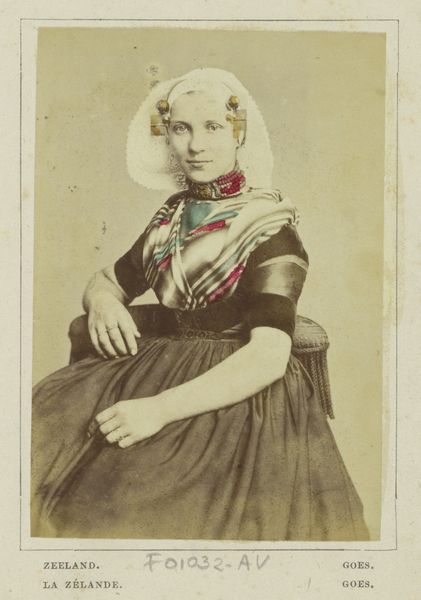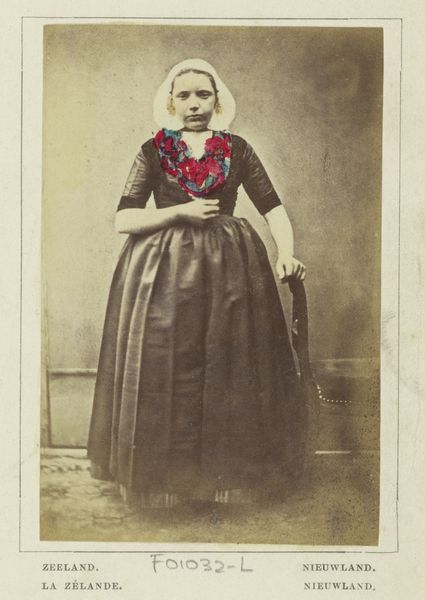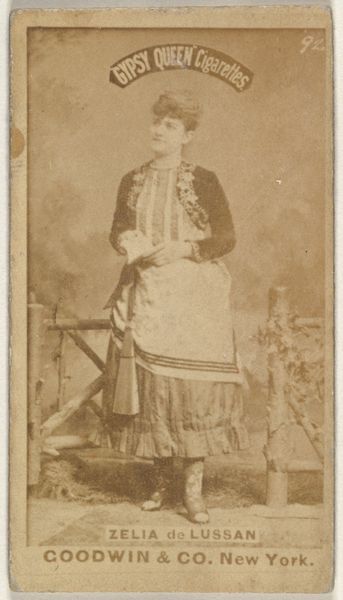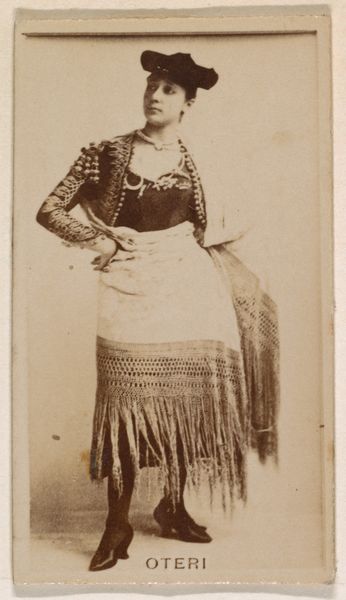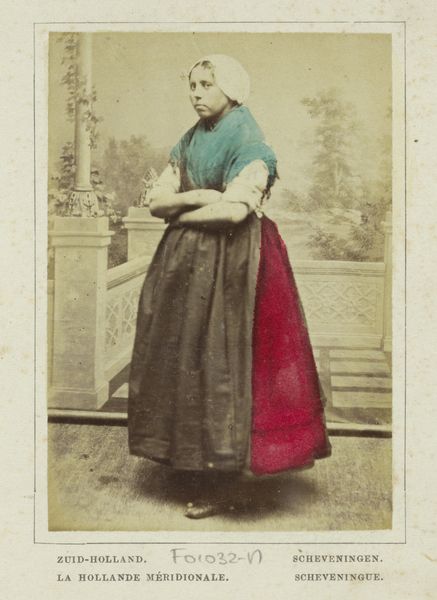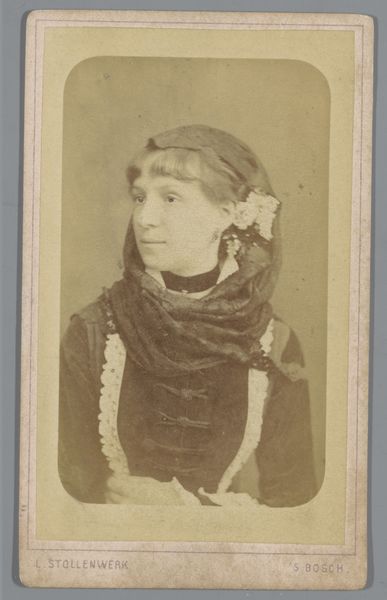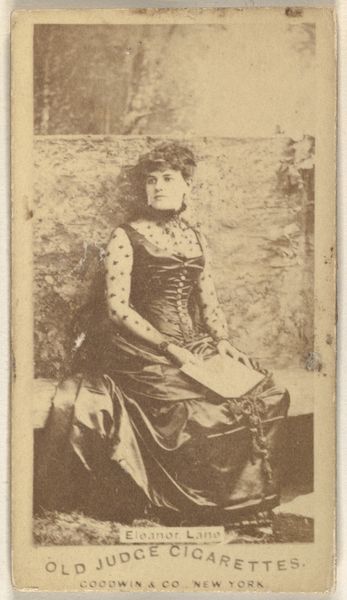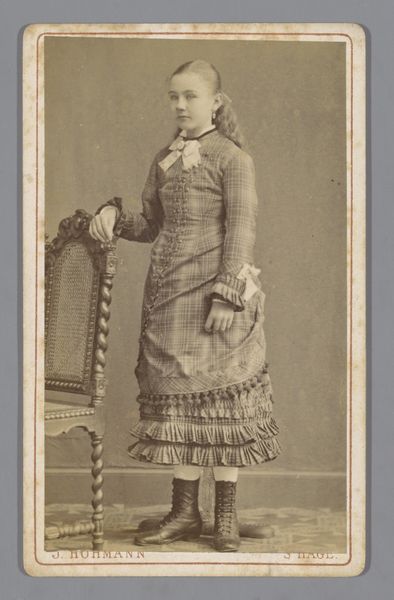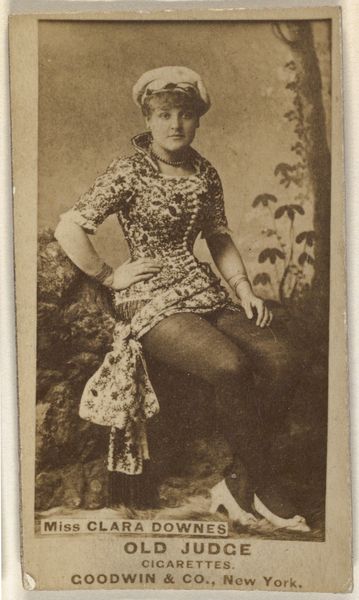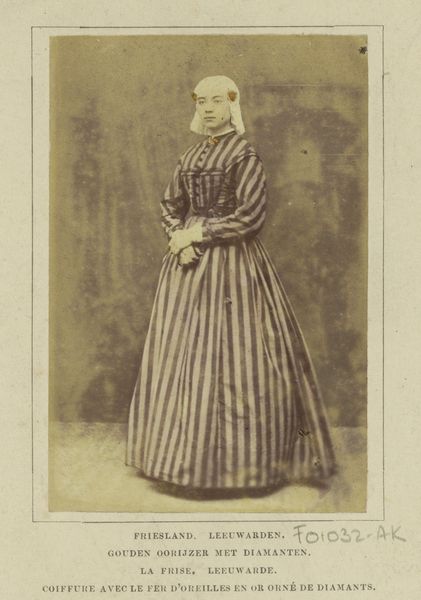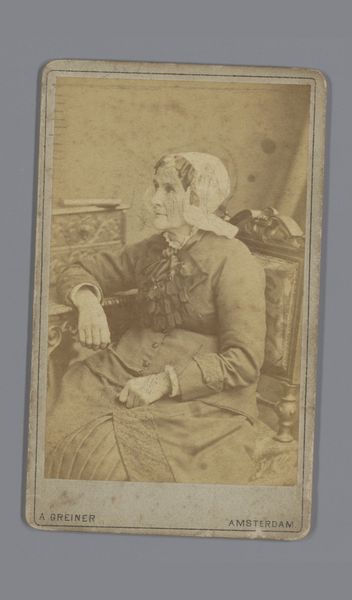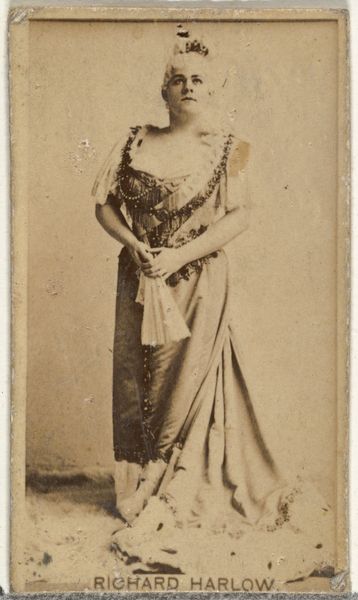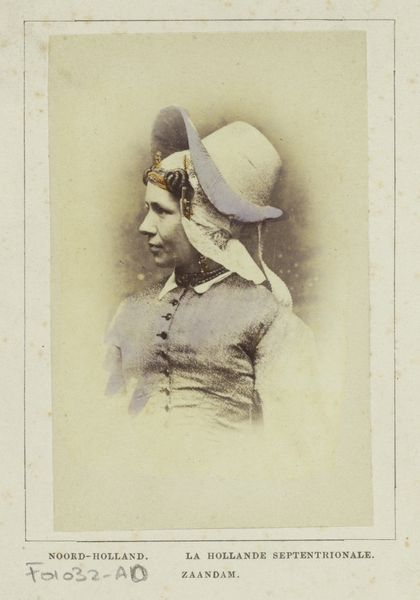
Portret van een onbekende vrouw in klederdracht van Goes, Zeeland 1860 - 1890
0:00
0:00
photography
#
portrait
#
dutch-golden-age
#
photography
#
19th century
#
watercolour illustration
#
realism
Dimensions: height 168 mm, width 109 mm
Copyright: Rijks Museum: Open Domain
Editor: So this is “Portrait of an Unknown Woman in Traditional Dress from Goes, Zeeland,” taken sometime between 1860 and 1890, currently residing in the Rijksmuseum. I’m struck by how much detail is in the clothing; you can almost feel the texture. What's your read on it? Curator: Well, first, consider the photograph itself as an object, a commodity. Jager, the photographer, is publishing this, mass-producing it for consumption. "Costumes des Pays-Bas" – it's being sold, likely to tourists, as a representation of Zeeland culture. It flattens the lived experience into a spectacle. Editor: Interesting. I hadn’t thought of it that way. So you're seeing it as less about the woman and more about what it's meant to *represent*? Curator: Exactly! Look at the costume. Every detail is meticulously rendered. This isn’t just about accurately portraying her clothing, it's about marketing a specific cultural image. And who gets to define and profit from that image? How does this differ from painting such scenes? What labor was involved in crafting those garments? Editor: I see. The work and artistry is extracted and commodified. The traditional headpiece especially; it becomes almost theatrical in its detail, ready to be consumed as a symbol of Zeeland. Curator: Precisely. And that act of capturing, printing, and distributing transforms lived culture into a consumable good. It forces us to consider the unequal power dynamics involved in the making and selling of culture. What stories are NOT being told by these popular images, who has access to cameras to push narratives? Editor: That shifts my entire perception of the photograph! I was initially focused on the individual portrait, but now I see the much larger, and arguably more complex, material and economic context. Curator: And that’s the key: to examine art not just as an aesthetic object, but as a product deeply embedded in systems of production, consumption, and social power.
Comments
No comments
Be the first to comment and join the conversation on the ultimate creative platform.

